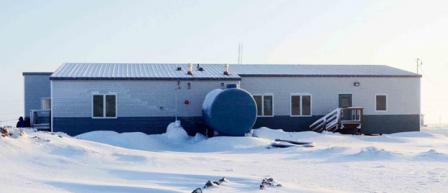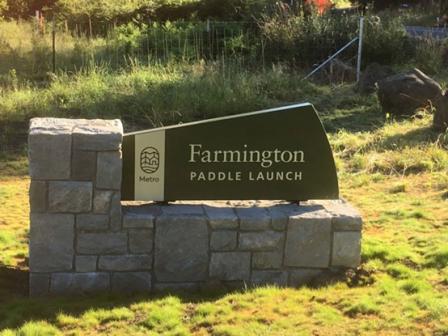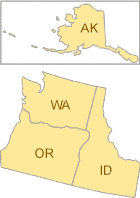Brownfields and Land Revitalization in Region 10
EPA Region 10 manages Brownfield programs in Washington, Idaho, Oregon and Alaska. On this page, you will find information specific to Region 10's Brownfields activities. Visit the national Brownfields Program web site for general information about the Brownfields Program and competitive grants
On this page:
- State Cleanup Programs Within Region 10
- Brownfields Technical Assistance
- Materials for Brownfields Grants
- Stories from Around the Region
- Federally Recognized Tribes with 128(a) Programs
State Cleanup Programs Within Region 10
- Alaska Dept. of Environmental Conservation
- Idaho Dept. of Environmental Quality
- Oregon Dept. of Environmental Quality
- Washington Dept. of Ecology
Brownfields Technical Assistance
Targeted Brownfields Assessments (TBAs)
EPA provides environmental assessment services free of charge to communities through the Targeted Brownfields Assessments (TBA) program. Services typically include Phase I and II assessments and cleanup planning.
Technical Assistance to Brownfields (TAB)
EPA's Technical Assistance to Brownfields Communities (TAB) program provides free technical assistance to communities to increase their understanding and involvement in brownfields cleanup, revitalization and reuse. The TAB program is funded by EPA and available to all stakeholders. The Center for Creative Land Recycling offers free technical assistance for region 10 and training program services to EPA Brownfields grantees and to those seeking brownfield grants in Region 10.
Materials for Brownfields Grants
Application Resources
The required application forms can be found at Grant Application Resources.
Grant Recipient Resources
Once you’ve been selected for a grant, a formal application package must be submitted. The required application forms can be found at Application Forms for New Grant Awards . After the application package has been reviewed and found eligible, reporting requirements must be adhered to through the life of the grant. Please see Grantee Reporting Requirements: Forms and Templates.
Stories from Around the Region
From Mills and Landfill to Riverfront Living
Everett operated its first major landfill from 1917 to 1974. In 1989, the landfill site was listed under the State of Washington’s Model Toxics Control Act (MTCA). Adjacent to the landfill, they had a paper mill that operated from 1891 until the early 1970s. The total project along the Snohomish River is 211-acres that includes 78 acres of wetland, 3-acres of parkland, and over 100 acres of buildable land.
A developer has completed building 190 townhomes on one site and 235 single-family detached homes have been 95% built and sold on the Simpson Site as of 12/31/2019. Everett’s Master Plan was amended in May 2019 to add 1,250 residential units in six-story buildings plus a hotel, office space, and retail space on the landfill. Based on a local newspaper article, building on the landfill is a $425M investment for a new developer; partially because it will require 80-feet deep pilings due to the soft soil.
Brownfield Partners with ADEC and ANTHC to Help Address Conveyed Land Issues
EPA Brownfield and Assessment staff are partnering with Alaska Department of Conservation (ADEC), to implement the 2016 recommendations of the U.S. Bureau of Land Management (BLM) concerning contaminated lands conveyed under the Alaska Native Claims Settlement Act.
The BLM, the Alaska Statement of Cooperation contaminated lands workgroup, and Alaska Native stakeholders developed an initial inventory. As a result, the EPA and ADEC joined as co-leads with the Department of Interior.
EPA is providing brownfield funding both to the Alaska Native Tribal Health Consortium (ANTHC) to assist with engaging native communities, and to ADEC to assist with finalizing the inventory.
Brownfield Assessment in Toksook, Alaska
 On behalf of the City of Toksook Bay, the Rural Alaska Community Action Program requested an environmental assessment of a former airport. An investigation of petroleum contamination was completed as technical assistance through the EPA Region 10 Targeted Brownfields Assessment program.
On behalf of the City of Toksook Bay, the Rural Alaska Community Action Program requested an environmental assessment of a former airport. An investigation of petroleum contamination was completed as technical assistance through the EPA Region 10 Targeted Brownfields Assessment program.
The results confirmed no petroleum contamination allowing this small coastal village on Nelson Island, Alaska, to develop a new ADA-compliant, energy-efficient early childhood center.
With $2,000,000 in leveraged redevelopment funding, this project provides a great example of meeting community need through partnerships and community support.
Brownfields Cleanup on the Tualatin River, Oregon
 In summer 2017, Portland Metro hosted the opening of the Farmington Paddle Launch in Hillsboro, Oregon. Using $176,000 of an EPA Brownfields Revolving Loan Fund grant through Business Oregon, Metro completed a soil cleanup and leveraged funding to remove tons of soil and concrete.
In summer 2017, Portland Metro hosted the opening of the Farmington Paddle Launch in Hillsboro, Oregon. Using $176,000 of an EPA Brownfields Revolving Loan Fund grant through Business Oregon, Metro completed a soil cleanup and leveraged funding to remove tons of soil and concrete.
With additional leveraging from Oregon Parks and Recreation, this 1.6-acre parcel was combined with others to complete the first part of the Tualatin River Water Trail – a launch site for non-motorized craft.
Land Revitalization Assistance at the Former Prairie Elementary School in Cottonwood, Idaho
 In 2017, at the request of Idaho's Cottonwood School District, an EPA brownfield and land revitalization team provided technical assistance for redevelopment of a former elementary school. The team assessed the current market and provided a Best Value Analysis Report with designs and recommendations to facilitate revitalization.
In 2017, at the request of Idaho's Cottonwood School District, an EPA brownfield and land revitalization team provided technical assistance for redevelopment of a former elementary school. The team assessed the current market and provided a Best Value Analysis Report with designs and recommendations to facilitate revitalization.
Based on the reuse scenarios, the Idaho Department of Environmental Quality’s brownfields program completed a clean-up using EPA funding, enabling the school district to sell the larger portion of the property in support of the community’s vision.
Federally Recognized Tribes with 128(a) Brownfields Programs
The following links exit EPA.gov Exit
Alaska
- Alaska Native Tribal Health Consortium
- Bristol Bay Native Association
- Central Council Tlingit Haida Indian Tribes of Alaska
- Chickaloon Native Village
- Copper River Native Association
- Douglas Indian Association
- Kawerak, Inc.
- Maniilaq Association
- Metlakatla Indian Community
- Native Village of Eklutna
- Native Village of Eyak
- Native Village of Gakona
- Native Village of Napaimute
- Native Village of Port Heiden
- Native Village of Tazlina
- Native Village of Tetlin
- Organized Village of Kasaan
- Qawalangin Tribe of Unalaska
- Sitka Tribe of Alaska
- Tanana Chiefs Conference
- Yakutat Tlingit Tribe
- Yukon River Inter-Tribal Watershed Council (YRITWC)

